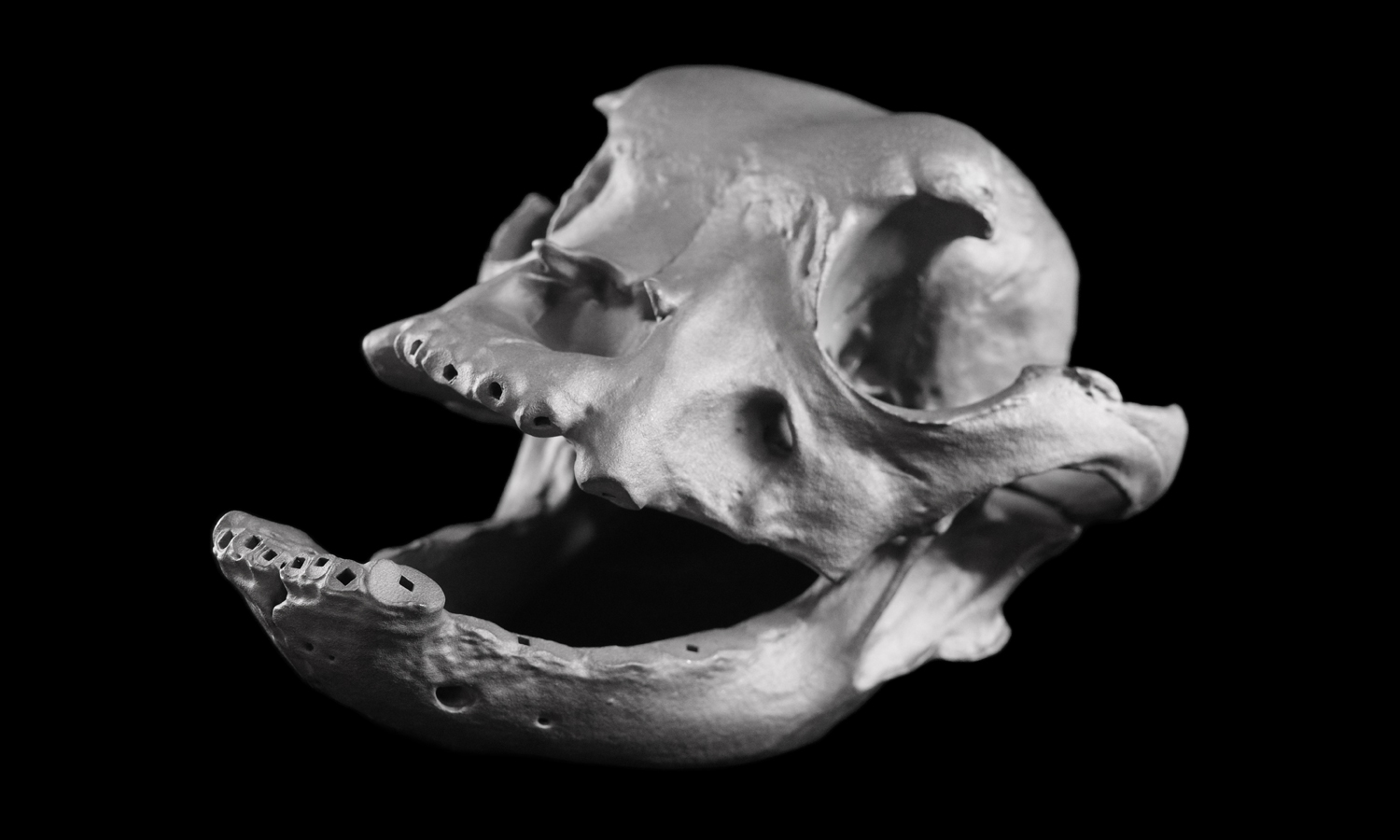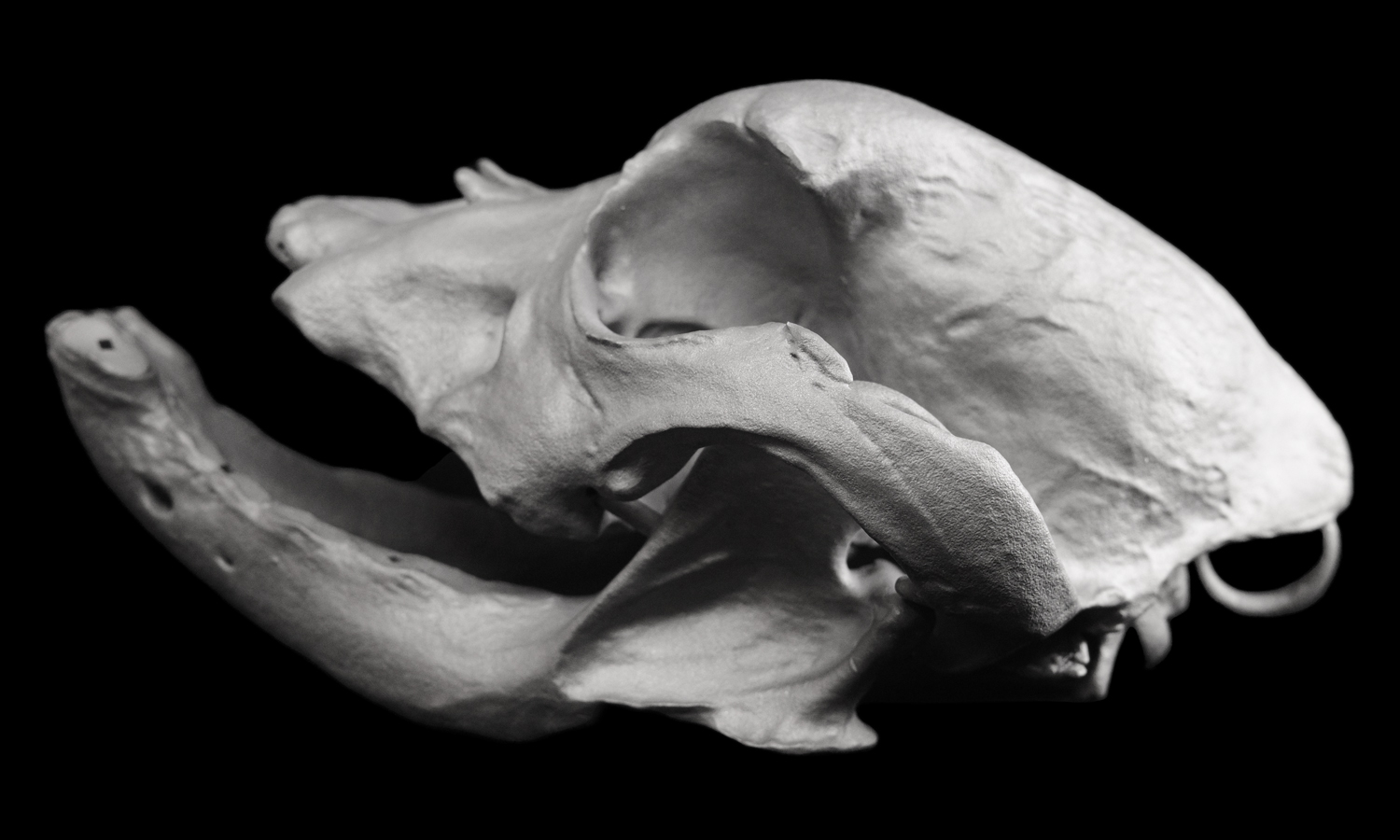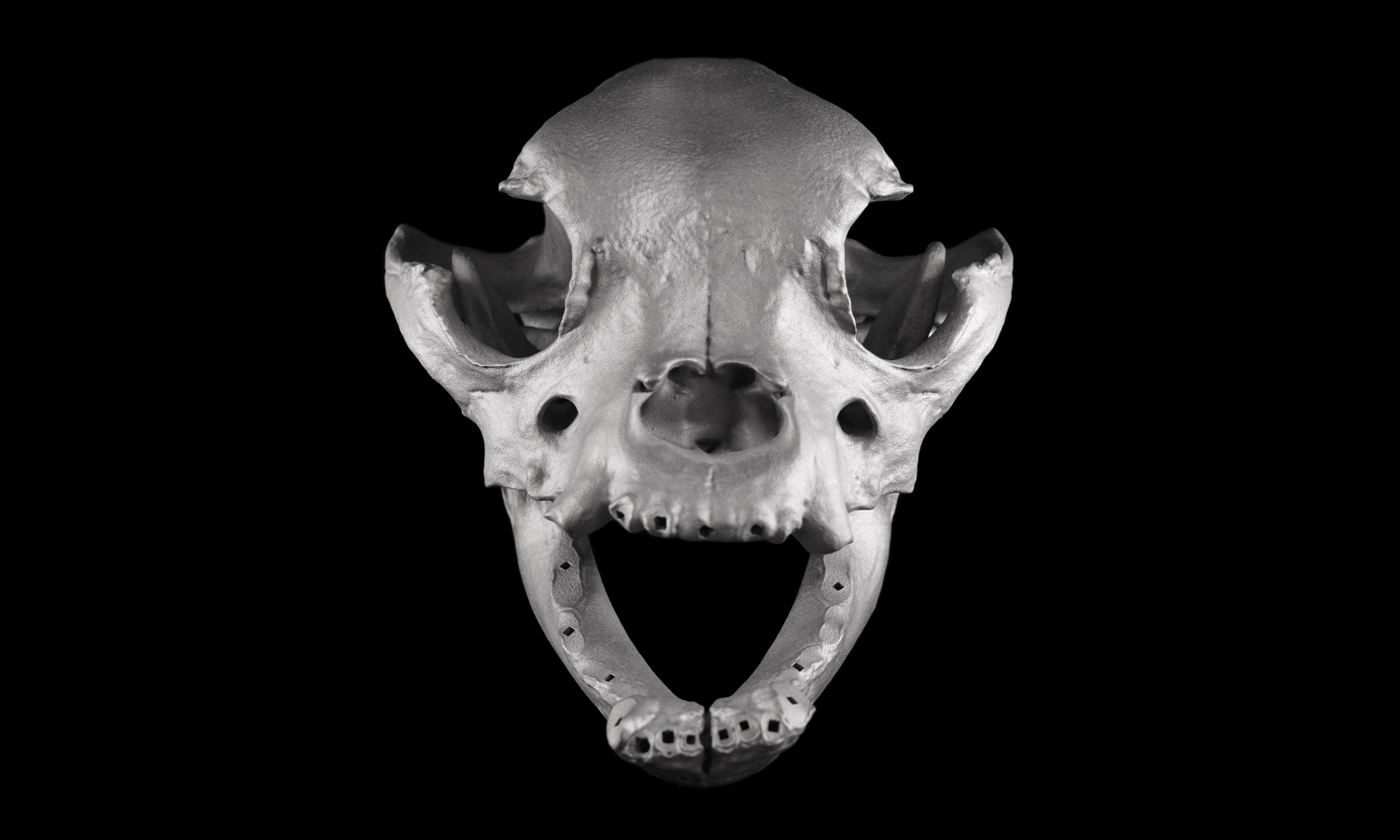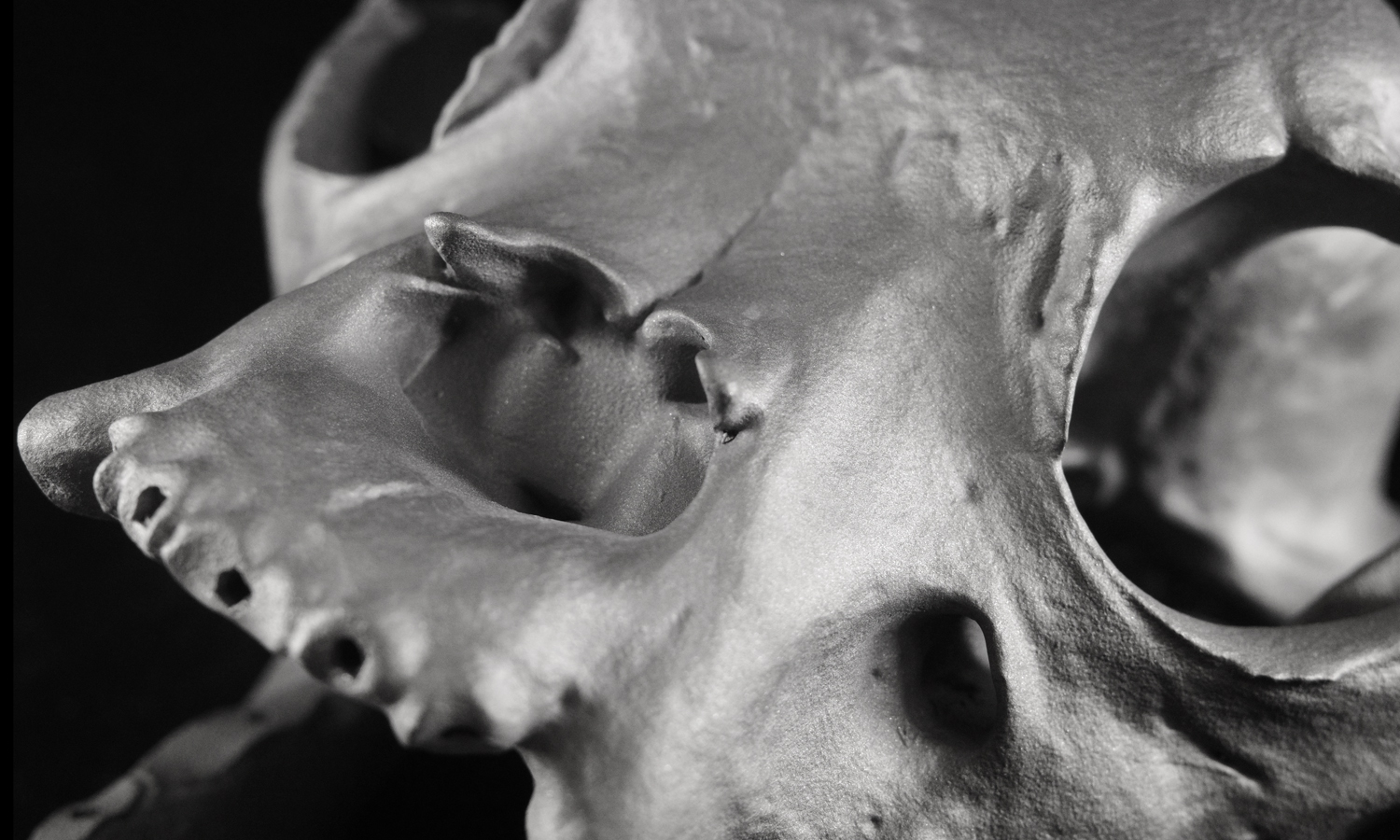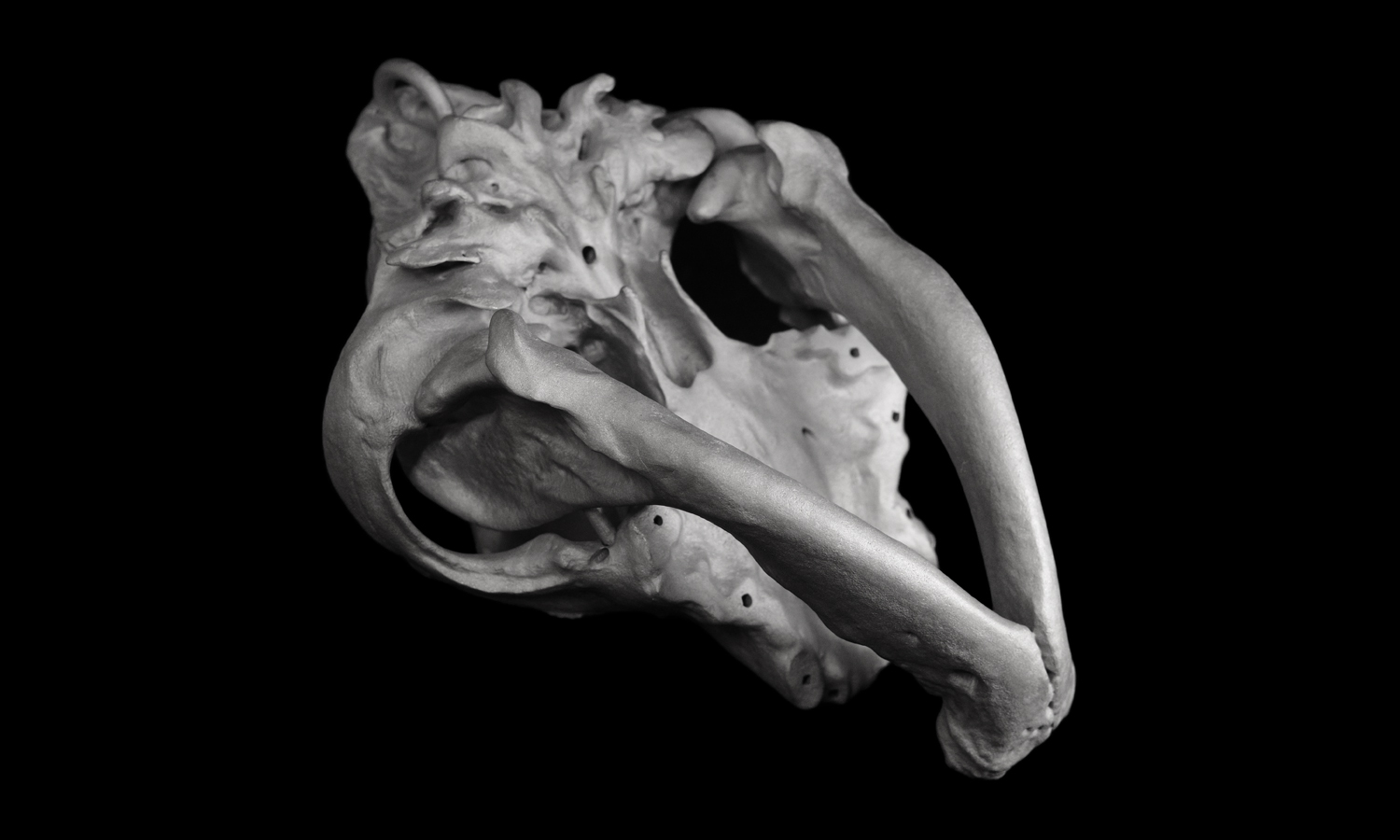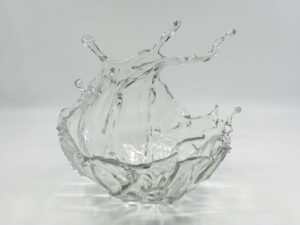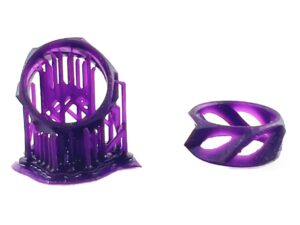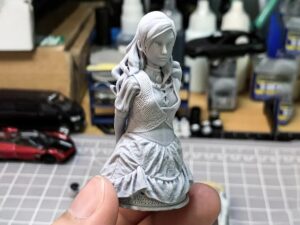- MJF 3D Printed PP Spring with Raw Finishing
- SLA 3D Printed Frosted Clear Resin Swappable Battery Container Box Prototype
Material Metal
Quantity 1 pcs
Price Range $100-1,000
Lead Time 3 workdays
Gallery
About Project
Have you ever wondered what it would be like to hold a real animal skull in your hands? How about a 3D-printed one made of titanium?
ThatŌĆÖs exactly what some researchers are doing with the help of FacFox, a leading onlisne 3D printing service provider in China. They are using Direct Metal Laser Sintering (DMLS) to create high-precision and durable titanium animal skull models for various purposes.
DMLS is a metal 3D printing process that uses a laser to fuse metal powder layer by layer, creating complex and intricate geometries that are impossible or very difficult to achieve with traditional manufacturing methods.┬ĀTitanium is one of the most suitable materials for DMLS, as it has excellent mechanical properties, corrosion resistance, biocompatibility, and lightweight.
One of the advantages of using DMLS to print titanium animal skull models is that it can preserve the original details and features of the skull, such as the shape, size, texture, and even the small holes for teeth and supporting rods.┬ĀThese holes are not randomly placed, but are designed according to the anatomical structure and function of the animal. They can help the researchers to assemble the teeth and make the model stand with supporting rods, as well as to study the biomechanics and evolution of the animal.
Another advantage of using DMLS to print titanium animal skull models is that it can reduce the cost and time of production, compared to other methods such as casting or machining.┬ĀTitanium is a very expensive material, but with DMLS, only the amount of material needed for the model is used, minimizing waste and saving money.┬ĀMoreover, DMLS can print multiple models at once in a single build chamber, reducing the number of setups and operations required.
Why would researchers choose titanium to make animal skull models?┬ĀThere are several possible reasons. One is that titanium is very strong and durable, which can ensure the longevity and quality of the model. Another is that titanium is biocompatible, which means it does not cause any adverse reactions or infections when in contact with living tissues. This can be useful for medical applications, such as implanting the model into an animal or a human for testing or treatment purposes. A third reason is that titanium has a metallic luster and color, which can make the model look more realistic and attractive.
If you are interested in ordering your own DMLS 3D printed titanium animal skull model, you can contact FacFox for a fast and reliable service.┬ĀFacFox offers a variety of metal 3D printing services, including aluminum, stainless steel, mold steel, precious metals, and more.┬ĀYou can upload your 3D file online, select your material and finish, get an instant quote and analysis, and place your order with ease. FacFox has a team of experts who can offer you the best solution for your project, as well as a quality assurance system that guarantees your satisfaction.┬ĀFacFox also provides other manufacturing services, such as plastic 3D printing, CNC machining, injection molding, sheet metal fabrication, and more.
DonŌĆÖt miss this opportunity to get your own DMLS 3D-printed titanium animal skull model from FacFox. Whether you need it for research, education, art, or personal use, you will be amazed by the results. Order now and enjoy the benefits of metal 3D printing!
Solution
- Step 1: The 3D CAD model of the animal skull was imported into data preparation software, where support structures were generated and the model was oriented for optimal printing. The model was then sliced into thin layers, each 40 microns in thickness.
- Step 2: The DMLS machine was prepared by filling the build chamber with layer of titanium powder. A high-power laser was used to scan and selectively fuse the powder particles according to the first layer of the model. The process was repeated for each subsequent layer until the entire model was completed.
- Step 3: After the printing was finished, the build chamber was cooled down and the printed model was removed from the powder bed. The excess powder was recycled for future use.
- Step 4: The support structures were detached from the model and the model was cleaned and polished. The model was then inspected for quality and accuracy.
